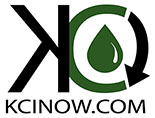
A construction entrance is a first line of defense when it comes to sediment control and erosion. The entrance to your site is the most traveled part, and any vehicle that moves through the entrance risks dragging all sorts of dirt and mud with is. The first step is to determine your entrance locations and clearly mark them. This ensures that vehicles know where the temporary construction entrance is located and will avoid entering the site in an unauthorized location that may not have the same stabilization measures in place. Some sites also use a wash system or a rumble rack at their entrance to help minimize track-out. Of course, if you do use a wheel wash system, you should plan to revert the runoff into a temporary sediment basin or trap so it doesn’t go off site!
Your chosen entrance has been located and marked, what do you need to do to set up and minimize tracking off site? The most common solution is to first place a geotextile fabric under a layer of aggregate. This is the stabilized entrance of choice, specifically in large land development or commercial projects. To maintain the entrance, we can sweep along the roadway and replace or mix up the aggregate as it gets too clogged with sediment. Most jurisdictions have specific minimum requirements for a construction entrance, and Florida is no different.
On homebuilding sites, however, each individual lot contains its own construction entrance. When this is the case, a gravel entrance such as the one described above becomes expensive to both install and maintain. You could also use a curb cutback, which is exactly how it sounds – simply cut the dirt back from the curb so there are a couple inches of space for water and runoff to collect without spilling onto the road. The other common option is to leave a vegetative buffer along the front of the lot. These options can work if they are maintained, but often the curb cutbacks either get full of sediment too quickly and vegetative buffers get torn up easily.
There are other options to consider, however. There are options such as a bamboo and fabric tracking system. This type of system consists of a panel with a double layer of fabric, such as Nilex, with pockets sewn in where bamboo is spaced out. The panels can be connected to create as long a section as is needed to be placed along the front of a lot. The best part of these panels? They are incredibly sturdy and can be reused as necessary. Once you are finished with the current lot, you can easily break down and move your panels to a new lot.
It may seem like an expensive up-front cost, but there are other types of tracking mats designed for both large and small sites that can be considered. Many of these products are designed with longevity and transportability in mind, making them a more efficient solution for any tracking issues. If you are interested in improving your construction entrances, KCI can help narrow down a product that can suit your needs!



